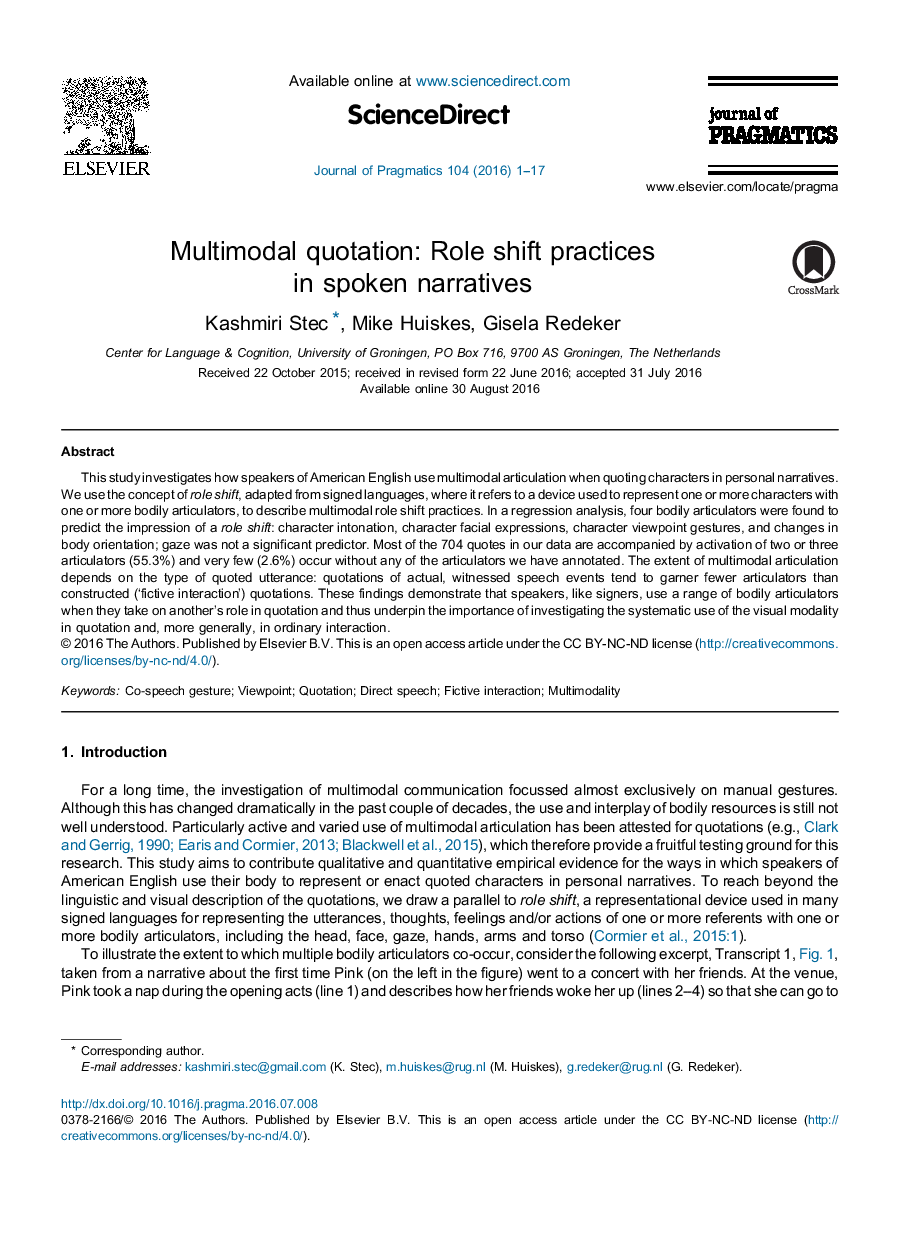| Article ID | Journal | Published Year | Pages | File Type |
|---|---|---|---|---|
| 5042810 | Journal of Pragmatics | 2016 | 17 Pages |
â¢Verbal, vocal, and visual resources combine to depict spoken quoted utterances.â¢Their combination is akin to role shift in signed languages.â¢The extent of multimodal articulation depends on the type of quoted utterance.
This study investigates how speakers of American English use multimodal articulation when quoting characters in personal narratives. We use the concept of role shift, adapted from signed languages, where it refers to a device used to represent one or more characters with one or more bodily articulators, to describe multimodal role shift practices. In a regression analysis, four bodily articulators were found to predict the impression of a role shift: character intonation, character facial expressions, character viewpoint gestures, and changes in body orientation; gaze was not a significant predictor. Most of the 704 quotes in our data are accompanied by activation of two or three articulators (55.3%) and very few (2.6%) occur without any of the articulators we have annotated. The extent of multimodal articulation depends on the type of quoted utterance: quotations of actual, witnessed speech events tend to garner fewer articulators than constructed ('fictive interaction') quotations. These findings demonstrate that speakers, like signers, use a range of bodily articulators when they take on another's role in quotation and thus underpin the importance of investigating the systematic use of the visual modality in quotation and, more generally, in ordinary interaction.
